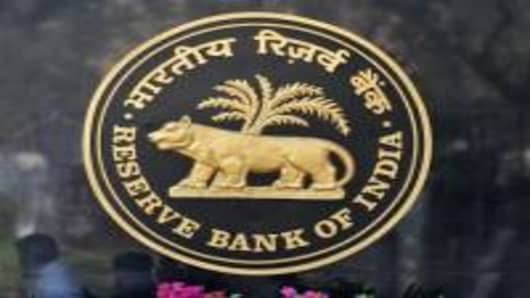Investment banks are scrambling to raise their estimates on how much further India's central bank will hike interest rates following a surprise 50 basis point (bps) increase on Tuesday.
The Reserve Bank of India (RBI) was widely expected to raise rates by 25 bps for an eighth time since March 2010; instead it decided to change its predictable way and raised the benchmark lending rate by 50 bps to 7.25 percent.
Credit Suisse, which had forecast India's central bank would stop hiking rates when it got to 7.25 percent, has had to significantly raise its estimates. It's now forecasting the benchmark lending rate will rise to 8 percent.
"I thought they would be concerned about growth... but what I got wrong is they are seemingly prepared to tolerate a period of lower growth to break the back of this persistently-high inflation," said Robert Prior-Wandesforde, Head of India & South East Asia Economics at the bank.
"They've just woken up to the fact that this is a consistent problem in India and a problem that seems to be getting worse."
The central bank seems to have been jolted by the fact that inflation for the month of March came in at nearly 9 percent, well above the central bank's target of 6 percent.
Barclays, which had forecast interest rates to rise to 7.5 percent, is now expecting rates to rise an additional 25 bps. Morgan Stanley forecasts India's central bank will only stop once it gets to 8 percent.
Why are investment banks suddenly turning so hawkish? According to Credit Suisse it's because of the tone of the monetary policy statement issued by the Governor of the central bank, Duvvuri Subbarao.
"[H]e surprised us by expressing a willingness to sacrifice some growth to calm inflation, while also indicating a reluctance to wait and see what the lagged effects of the policy tightening to date would be," the bank wrote in a note to clients.
With interest rates headed higher, analysts are also warning that growth in India will slow. Credit Suisse expects growth to slow from the 8.6 percent rate last year to 7.5 percent in this fiscal year, while Morgan Stanley expects gross domestic product to grow 7.7 percent. That's much lower than the 9 percent target the Indian government has set.



